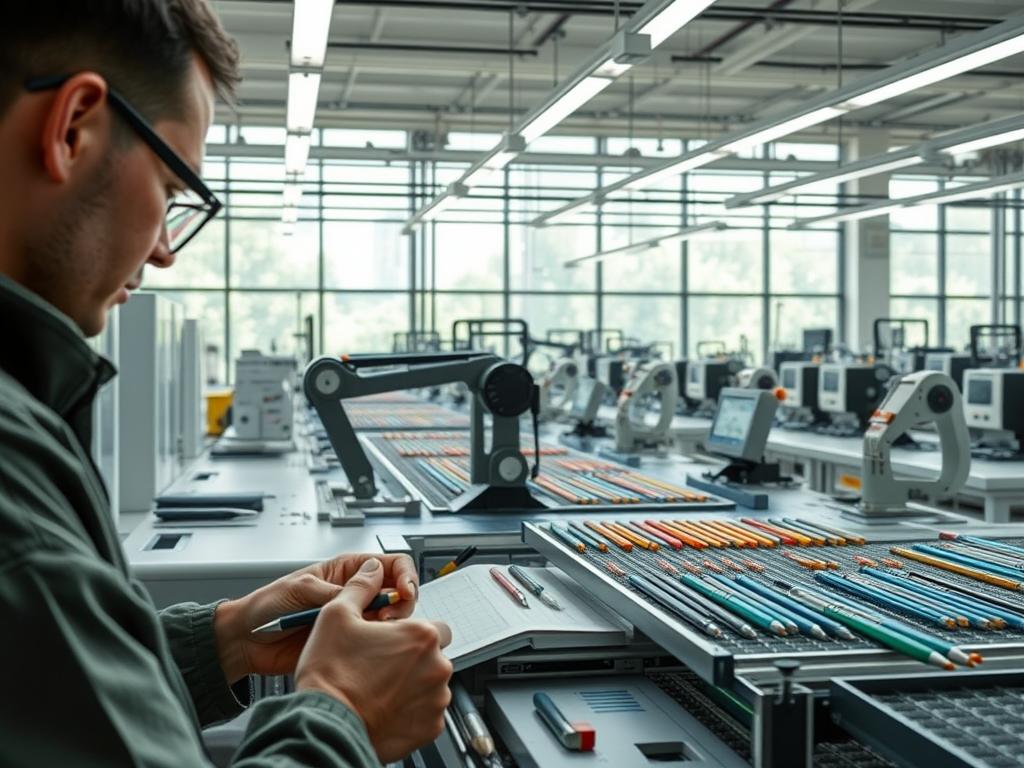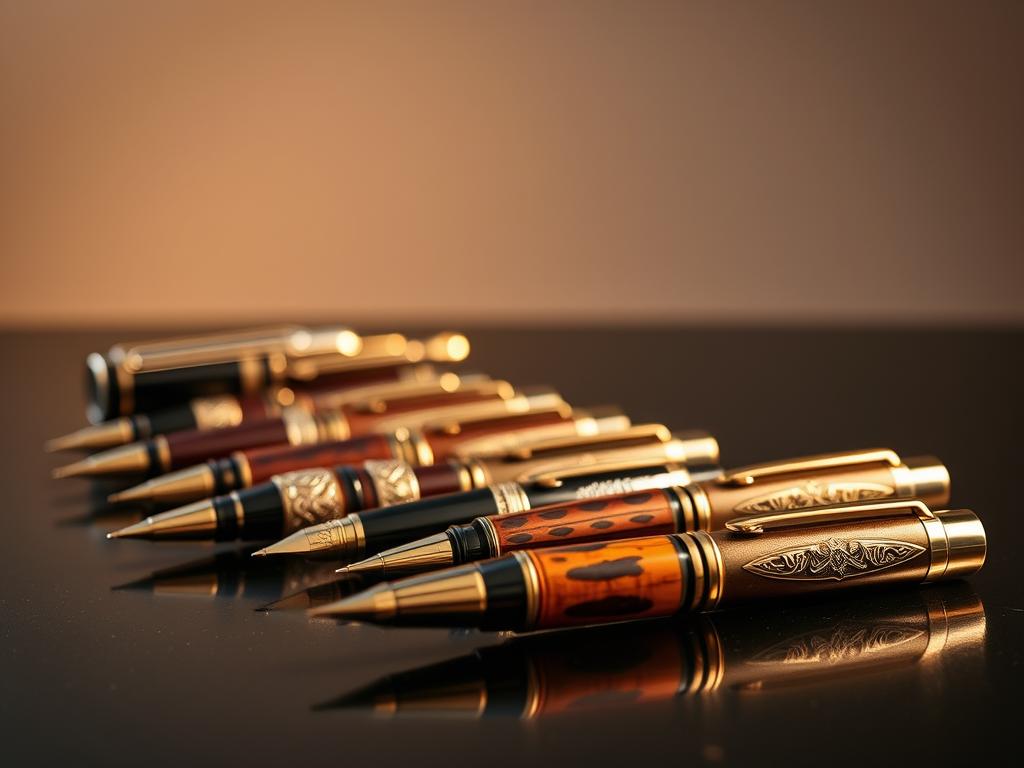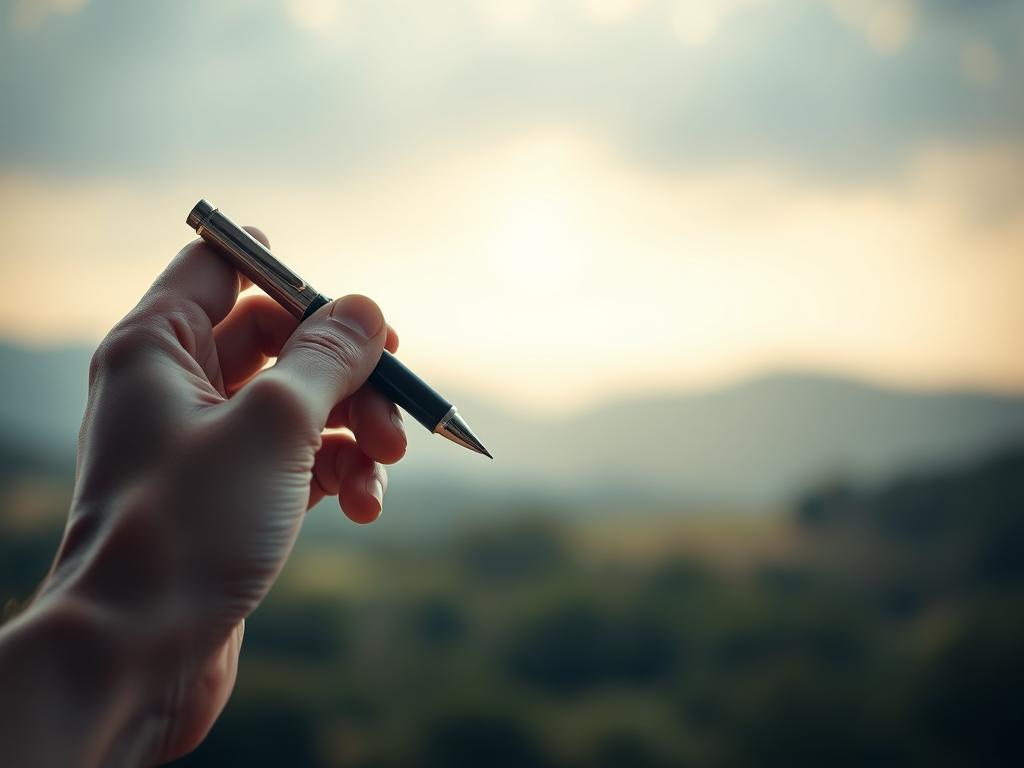In a world of disposable gadgets, fine writing instruments stand apart. They blend practicality with personal expression, turning everyday tasks into moments of intentionality. What we hold in our hands often reflects what we hold in our hearts – and this truth shines through in how modern creators approach their craft.
Today’s discerning users seek items that tell a story. Many manufacturers now prioritize recycled metals, responsibly harvested resins, and biodegradable packaging. A growing number of fountain and ballpoint designs feature components reclaimed from ocean plastics or vintage machinery.
Quality matters as much as conscience. Artisans balance centuries-old techniques with cutting-edge engineering. For instance, some brands use precision-milled nibs that glide smoothly while conserving ink flow. Others reinvent classic shapes with ergonomic grips for comfort during long writing sessions.
This shift isn’t just about materials – it’s a movement. Collectors and casual users alike increasingly value transparency in production methods. They ask questions: Where was this made? Who crafted it? How does it minimize environmental impact?
Key Takeaways
- Modern writing tools combine functionality with personal values
- Sustainable materials like recycled metals are transforming design
- Superior craftsmanship enhances both performance and longevity
- Transparent manufacturing processes build consumer trust
- Innovative updates to fountain and ballpoint pens improve user experience
Tips for ethical luxury pen buying: A Guide to Informed Choices
Conscious consumers now seek tools that align craftsmanship with environmental stewardship. Start by exploring brand websites for detailed sourcing policies. Reputable companies often share factory certifications and material origins upfront.
What Makes a Responsible Manufacturer?
Look for third-party verification like Forest Stewardship Council stamps or B Corp status. These labels indicate adherence to strict ecological and labor standards. Some fountain pen makers now use blockchain tech to track metal alloys from mine to workshop.
Breaking Down Material Choices
High-quality ballpoint designs increasingly feature:
- Barrels from reclaimed ocean plastics
- Nibs using recycled titanium
- Inks free from volatile organic compounds
This table compares common sustainable components in premium writing tools:
| Material | Source | Benefits |
|---|---|---|
| Post-Consumer Resin | Recycled electronics | Reduces e-waste |
| FSC-Certified Wood | Managed forests | Prevents deforestation |
| Recovered Steel | Vintage machinery | Unique patina development |
When testing rollerball options, examine the grip section. Brands committed to ergonomics often use non-slip rubber from responsibly harvested plantations. The best writing instruments balance heft and comfort – try before purchasing when possible.
Remember: durable construction means fewer replacements. A well-made fountain pen can last generations with proper care, making initial investments worthwhile.
Exploring Luxury Pen Craftsmanship and Design
The creation of exceptional writing instruments marries tradition with innovation. Artisans blend time-honored techniques with modern engineering, transforming simple tools into functional art. This balance elevates everyday items into cherished companions for creative expression.
Mastering Fountain Pen Artistry
Fountain pens showcase meticulous craftsmanship through nibs shaped for smooth ink flow. Brands like Pelikan use 24-karat gold nibs polished by hand, ensuring consistent performance. These materials age gracefully, developing unique patinas over decades of use.
Engineering Precision in Modern Designs
Ballpoint and rollerball models rely on advanced mechanisms. Cross’s patented ink delivery systems prevent leaks while maintaining crisp lines. Tungsten carbide tips in mechanical pencils offer durability, reducing waste from broken leads.
Innovative Features That Captivate
Distinctive mechanisms set premium tools apart:
- Retractable clips with magnetic alignment
- Twist-activated barrels revealing hidden compartments
- Interchangeable nibs for calligraphy or sketching
Companies like Faber-Castell reinvent classics using FSC-certified wood. Their 900-year-old forest management proves sustainability enhances longevity. Such approaches minimize environmental impact while delivering heirloom-quality instruments.
Sustainable Materials & Eco-Friendly Manufacturing Practices
Modern manufacturers are rewriting the rules of production through earth-conscious innovation. By reimagining everyday items, they create instruments that serve users while protecting ecosystems. This approach extends product life cycles and reduces reliance on virgin resources.

Eco-Friendly Materials and Recycled Components
Recycled paper and plant-based plastics now replace traditional petroleum-based parts. Pilot’s Begreen collection uses 89% post-consumer paper in packaging and barrel construction. Lamy’s Safari rollerball features grips made from biodegradable algae composites.
Three standout materials transforming the industry:
| Material | Source | Benefit |
|---|---|---|
| Post-Consumer Paper | Office waste | Saves 3 trees per ton used |
| Biodegradable Plastic | Corn starch | Decomposes in 180 days |
| Reclaimed Aluminum | Aircraft parts | Uses 95% less energy than new metal |
Ethical Production and Responsible Waste Management
Kaweco’s Sport model line demonstrates closed-loop manufacturing. Their German facility recycles 98% of production scraps into new components. Water-based inks and solvent-free adhesives prevent toxic runoff.
Leading brands now track carbon footprints from factory to shelf. This transparency helps consumers support companies making tangible world impacts. By choosing these models, users join a movement prioritizing durability over disposability.
Custom and Limited Edition Pens: A Collector’s Perspective
Collectors and creatives find magic in tools that tell their own stories. Limited editions and personalized designs transform ordinary objects into extensions of identity. These pieces often become lifelong companions, carrying memories of milestones or daily triumphs.

The Allure of Limited Editions and Rare Finds
Scarcity drives desire. Brands like Montblanc release numbered fountain pens celebrating historical figures, while Visconti crafts 100-unit series inspired by Renaissance art. Enthusiasts hunt these treasures at specialty shops or auctions, valuing their uniqueness as much as their craftsmanship.
Hand-finished details separate limited runs from mass production. A Nakaya writer’s desk pen might feature urushi lacquer applied over months. Each stroke of the artisan’s brush adds depth only time can create.
Personalizing Your Writing Tool for Individual Expression
Customization turns instruments into heirlooms. Many brands offer engraving services for initials or meaningful dates. Others, like Graf von Faber-Castell, provide bespoke color combinations for barrel resin and grip sections.
Consider these customization options from leading brands:
| Brand | Personalization | Unique Feature |
|---|---|---|
| Montegrappa | Hand-engraved signatures | 18K gold nib adjustments |
| Aurora | Custom lacquer patterns | Matching ink formulations |
| Waterman | Weight balancing | Ergonomic grip shaping |
Enthusiasts often pair their pens with themed accessories. A coffee-stained leather journal might complement a bronze-bodied writer’s tool, creating a cohesive creative kit. These curated combinations reflect personal journeys through color, texture, and function.
Limited editions gain value through stories. Collectors document acquisition dates and first uses in dedicated logs. This practice turns everyday writing into a ritual, connecting past and present with every page.
Innovative Features and Modern Mechanics in Luxury Pens
The evolution of writing instruments reveals a fascinating dance between heritage and progress. Today’s designs honor timeless elegance while embracing technology that simplifies daily tasks. From precision-engineered metals to eco-conscious plastics, materials now serve both form and function.
Ergonomic Designs and Advanced Click Mechanisms
Modern grips contour to natural hand positions, reducing fatigue during extended use. The Lamy Dialog CC merges a tapered form with a magnetic closure system – a click mechanism that satisfies tactile love for precision. Refillable cartridge systems in models like Pilot’s Vanishing Point ensure seamless transitions between ink colors.
Integrating Technology with Classic Writing Tools
Cross’s Peerless 125 pairs a brass barrel with Bluetooth tracking for digitizing notes. Craftsmen embed NFC chips in caps for authenticity verification, preserving clean lines. Recycled plastics gain strength through aerospace-grade molding techniques, proving sustainability doesn’t sacrifice durability.
These advancements honor tradition while answering modern needs. A Waterman Expert’s tungsten metals withstand decades of use, yet its quick-dry cartridge suits fast-paced tasks. The result? Tools that spark joy through thoughtful technology, bridging generations of writers.
Conclusion
Thoughtful selections in writing tools leave lasting impressions beyond the page. Today’s creators blend premium materials with planet-friendly practices, offering options that respect both artistry and ecology. From responsibly sourced woods to refill systems minimizing waste, every detail serves a purpose.
Informed choices now shape more than personal style—they support sustainable innovation. Discerning users prioritize designs using recycled ingredients without sacrificing performance. Whether selecting ergonomic grips or timeless aesthetics, balance remains key between function and environmental care.
Quality refills and durable construction extend a tool’s life, proving thoughtful decisions pay off long-term. As you explore new additions to your collection, consider how each choice reflects your values. Visit trusted artisans who transparently share their craft’s journey, ensuring every stroke on the page aligns with your vision for a better world.
FAQ
What makes a writing instrument sustainable?
Sustainable tools often use recycled metals, responsibly sourced wood, or biodegradable plastics. Brands like Pilot and Lamy prioritize eco-conscious materials and low-waste production methods.
How do fountain pens differ from ballpoints in craftsmanship?
Fountain pens feature handcrafted nibs, often made from gold or stainless steel, and require precise ink flow tuning. Ballpoints focus on durable tips and smooth-gliding ink cartridges, as seen in brands like Montblanc.
Are limited edition items worth collecting?
Limited editions, such as Visconti’s handmade designs, often hold value due to rarity and unique artistry. They appeal to enthusiasts who appreciate storytelling through craftsmanship.
Can modern tools like ergonomic designs blend with classic styles?
Yes! Brands like Cross combine sleek, traditional aesthetics with contoured grips and advanced click mechanisms for comfort during long writing sessions.
How can someone identify responsible production practices?
Look for certifications like FSC (wood sourcing) or B Corp status. Companies such as Kaweco openly share their recycling programs and carbon-neutral shipping efforts.
What materials are considered eco-friendly for daily use?
Recycled aluminum, plant-based resins, and cork are popular. Faber-Castell uses sustainably harvested wood, while Caran d’Ache offers refillable ink bottles to reduce plastic waste.
Do high-end brands offer customization options?
Many do! Pelikan allows engraving, and Aurora offers nib customization for personalized line widths. These touches add sentimental value to functional tools.
How should one maintain a fountain pen for longevity?
Clean the nib regularly with water, use quality ink to avoid clogs, and store it horizontally. Brands like Waterman provide detailed care guides with their products.
Are refillable options better for the environment?
Refillable cartridges or piston-fill systems, like those from Parker, minimize plastic waste. They’re cost-effective and reduce the need for disposable components.
What role does technology play in traditional writing tools?
Innovations include scratch-resistant coatings, hybrid inks, and apps for pen tracking. Sheaffer’s Tempograf line merges classic designs with precision-engineered mechanisms.


